When it comes to growing potatoes, boosting the potato yield per plant is a primary goal for any farmer or avid gardener like you. However, many factors can affect the productivity of your potato plants, and even minor mistakes can lead to significant reductions in yield.
In this article, we look into the production of potatoes per plant. Also, we will go into the world of potato cultivation and uncover five crucial mistakes that you must avoid to ensure a high yield. So, read on to learn the precise details that will enable you to accomplish outstanding outcomes!
Contents
Potato Production In Pounds Per Plant
Ok, how many pounds of potatoes can you expect to get per plant?
- The typical yield of a potato plant is 2 to 10 pounds of potatoes per plant.
- Although, getting much higher yields, ranging from 4 to 10 pounds per plant or more is feasible given ideal conditions and compatible potato varieties.
However, how many sweet potatoes can yield from one plant?
- On average, you can expect to harvest anywhere from 4 to 8 sweet potatoes per plant.
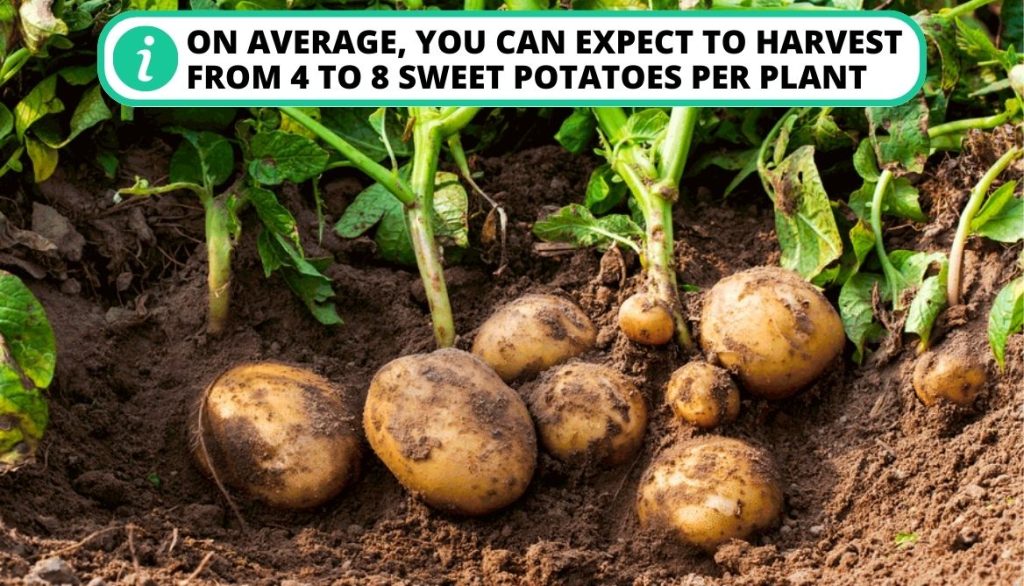
How Many Potato Yield Per Plant – The Factors
There are several variables that can affect the output of more potatoes per plant. The following details how these variables affect the yield:
1. Potatoes Kinds or Varieties
The yield potential of many seed potato types differs. Some potato kinds are bred specifically for good yields, while others may prioritize other characteristics like taste or disease resistance.
2. Growing Conditions
The environmental factors during the growing season can significantly affect the yield. Key considerations include:
- Soil quality: To provide the best possible seed potato growth and output, the garden soil must be healthy, well-drained, and rich in nutrients.
- Sunlight: Potatoes require full sun for healthy growth. Insufficient sunlight can limit photosynthesis and reduce good yield.
- Temperature: Potatoes thrive in cool climates. Extreme heat or cold can negatively impact growth and yield.
- Water supply: Consistent watering is crucial, as both drought stress and excessive moisture can hinder potato production.
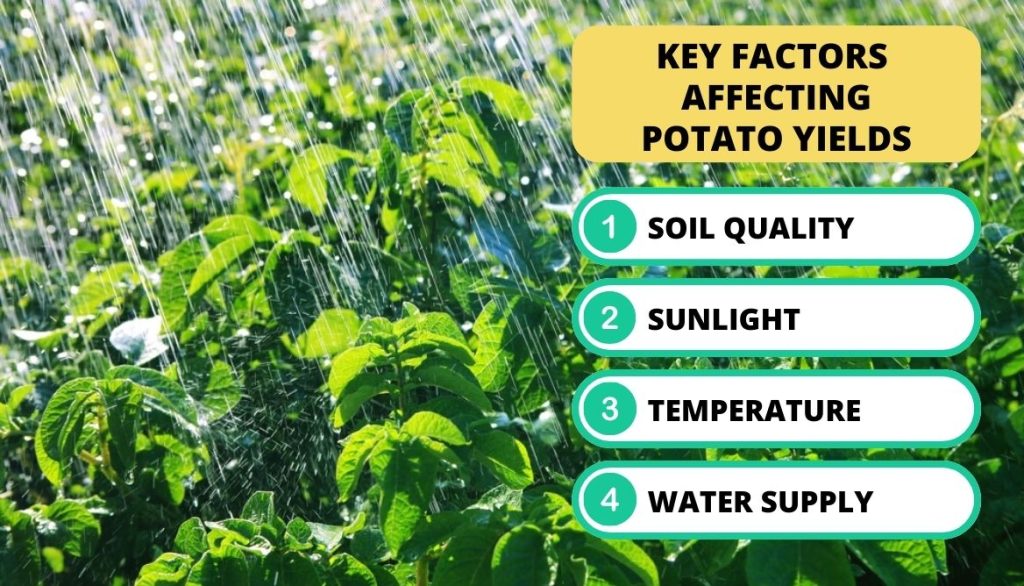
3. Planting Density
Potato plants’ access to nutrients and resources is influenced by the distance between them. If you plant potatoes too close together, it can result in competition for nutrients and limited growth, leading to lower yields.
4. Fertilization And Nutrition
Providing the necessary nutrients through proper fertilization is important for maximizing potato yield. A balanced fertilizer application can support healthy plant growth and higher yields, this including:
- Phosphorus,
- Nitrogen,
- Potassium.
5. Pest And Disease Management
Most potatoes are susceptible to various pests and diseases that can reduce how many potatoes per plant. Implementing effective pest control measures, such as using insecticides or practicing crop rotation, can help mitigate losses.
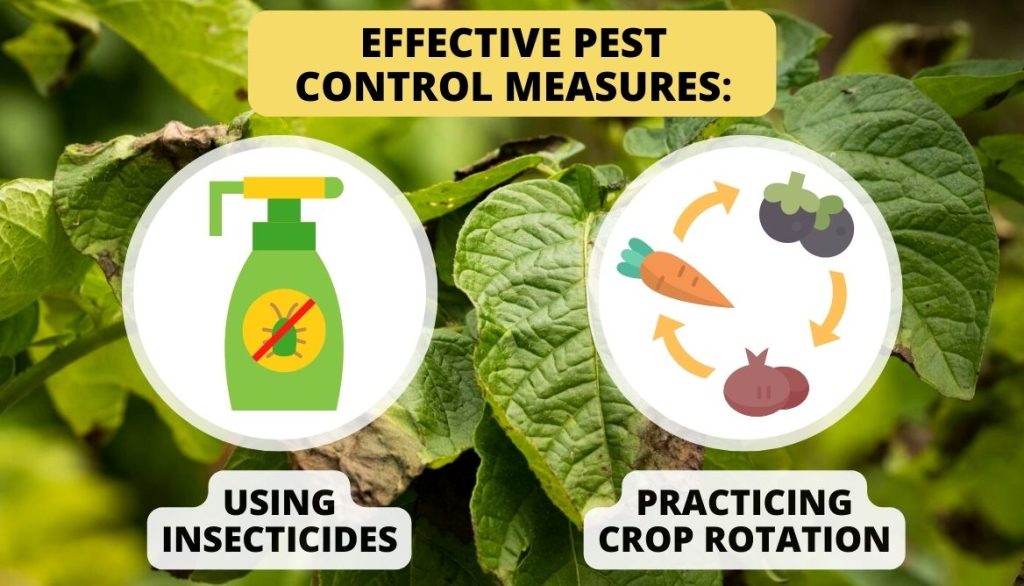
6. Harvest Timing
Harvesting at the right time is crucial to maximize potato yield. Waiting until the tubers reach their mature size allows them to reach their full potential, resulting in a higher yield per plant.
How Many Potatoes Can Three, Four, or More Plants Produce?
It might be difficult to provide an exact number of how many potatoes per plant, but the following table offers a general estimate of how many pounds of potatoes are based on the number of plants.
Number of Plants | Approximate Yield (in pounds) | Approximate Yield (in kilograms) |
Three Plants | 15-30 | 7-14 |
Four Plants | 20-40 | 9-18 |
Five Plants | 25-50 | 11-23 |
Six Plants | 30-60 | 14-27 |
Seven Plants | 35-70 | 16-32 |
Increasing the Potato Plant Yield
There are various methods you may take to boost the production of potato plants. Here are a few suggestions:
- Test soil surface, amend with organic matter, and ensure good drainage.
- Pick disease-resistant, high-yielding types that are appropriate for your region.
- Use healthy sprouts with verified seed potatoes.
- Grow potatoes at the right depth and spacing in loose, well-drained soil.
- Apply balanced fertilizers with higher phosphorus and potassium content, and side dress with nitrogen.
- Provide consistent and adequate water, and avoid overwatering.
- Monitor and control pests and diseases, and practice preventive measures.
- Keep the vegetable garden free from weeds and adopt mulching.
- To cover tubers and stop them from turning green, pile earth around the base of the plants.
- Harvest when foliage yellows, handle tubers carefully, and allow them to dry before storage.
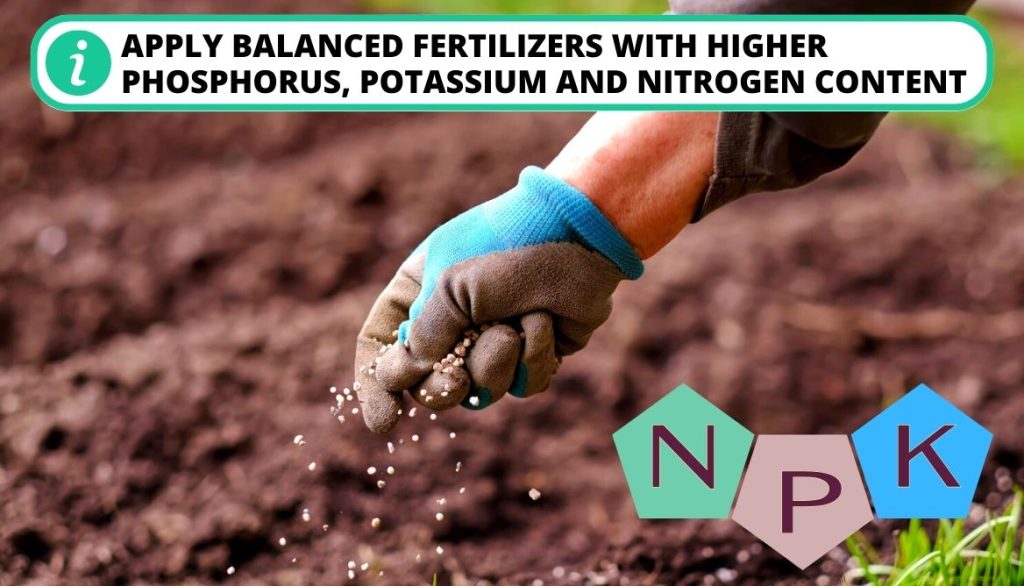
Problems That Can Reduce Potato Yield
Several factors can decrease the yield of more potatoes per plant. Here are some common problems that can affect seed potato productivity:
1. Poor Soil Conditions
Factors such as poor drainage, compacted soil, high salinity, acidity or alkalinity, and nutrient deficiencies can negatively affect plant growth and how many potatoes per plant.
2. Improper Irrigation
Insufficient water can lead to stunted growth and reduced tuber formation when planting potatoes, while excessive water can increase the risk of diseases and rot.
3. Weed Competition
Weeds compete with potato plants for nutrients, water, and sunlight. If not adequately controlled, weeds can affect how many potatoes per plant because of shading the potato plants and inhibiting their growth.
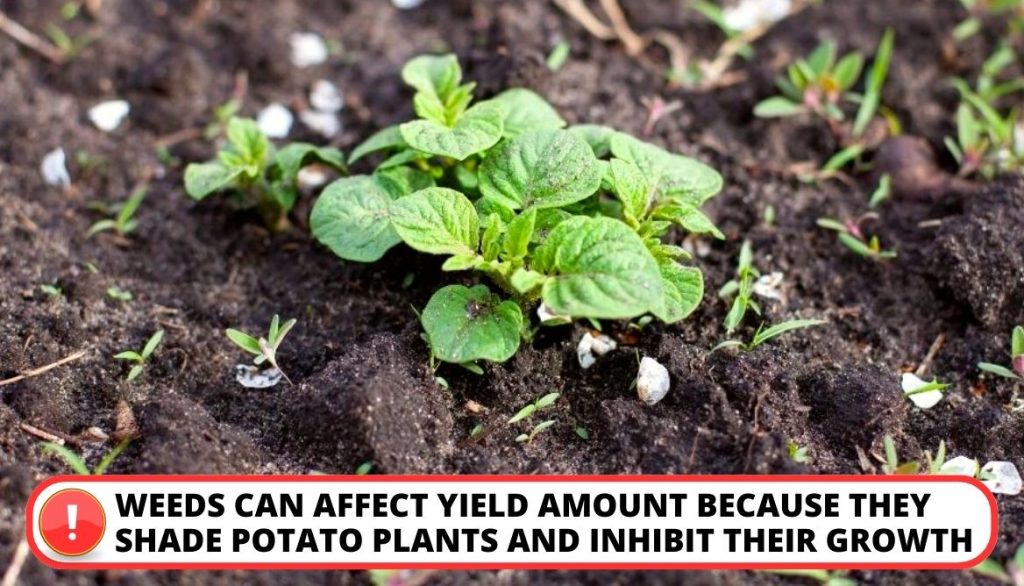
4. Insufficient Nutrients
Inadequate or imbalanced nutrient levels in the soil can limit tuber development and lower yield. Key nutrients for potatoes include nitrogen, phosphorus, potassium, calcium, and magnesium.
5. Temperature and Climate
Extreme hot and cold temperatures can negatively impact how many potatoes a baby potato can yield. Frost damages the plants, while excessive heat causes wilting and reduces tuber formation.
6. Improper Planting Techniques
Growing potatoes at incorrect depths, improper spacing, or planting damaged or diseased seed potatoes can result in suboptimal plant growth and reduced yields.
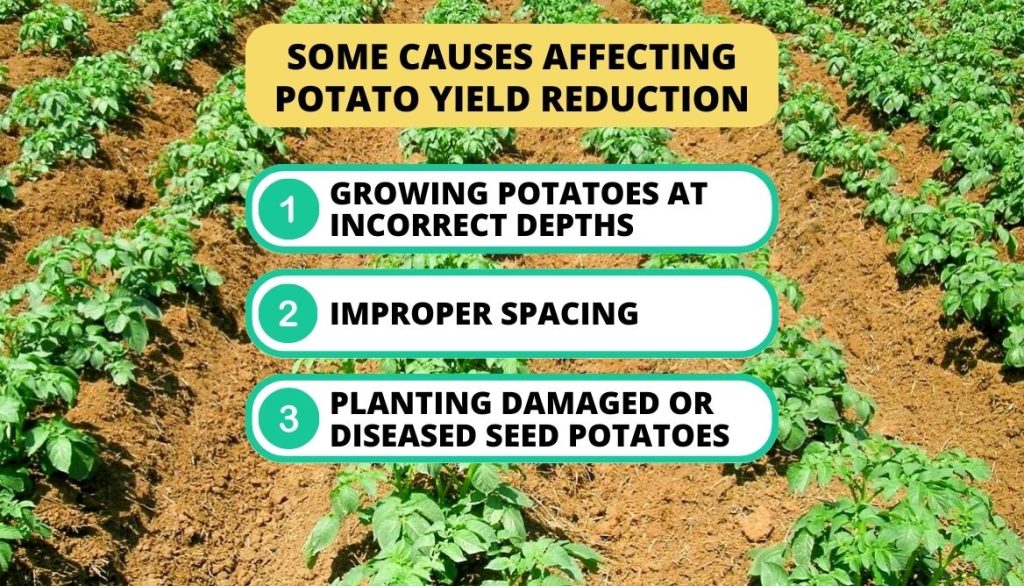
7. Lack of Crop Rotation
Continuous potato cultivation without proper crop rotation can lead to the buildup of pests, diseases, and soil-borne pathogens. This can result in reduced yields and increased susceptibility to various problems.
8. Variety Selection
Choosing inappropriate potato varieties for specific growing conditions can affect how many potatoes seed pieces can develop. Some potato seed varieties may be more susceptible to pests, diseases, or adverse environmental conditions, leading to lower yields compared to more suitable varieties.
9. Pests and Diseases
Various pests and diseases can significantly impact how many potatoes a seed can give. Uncontrolled outbreaks of pests and diseases can cause significant reductions in tuber initiation and production.
Examples include potato cyst nematodes, aphids, Colorado potato beetle, late blight, early blight, bacterial wilt, and viral infections.
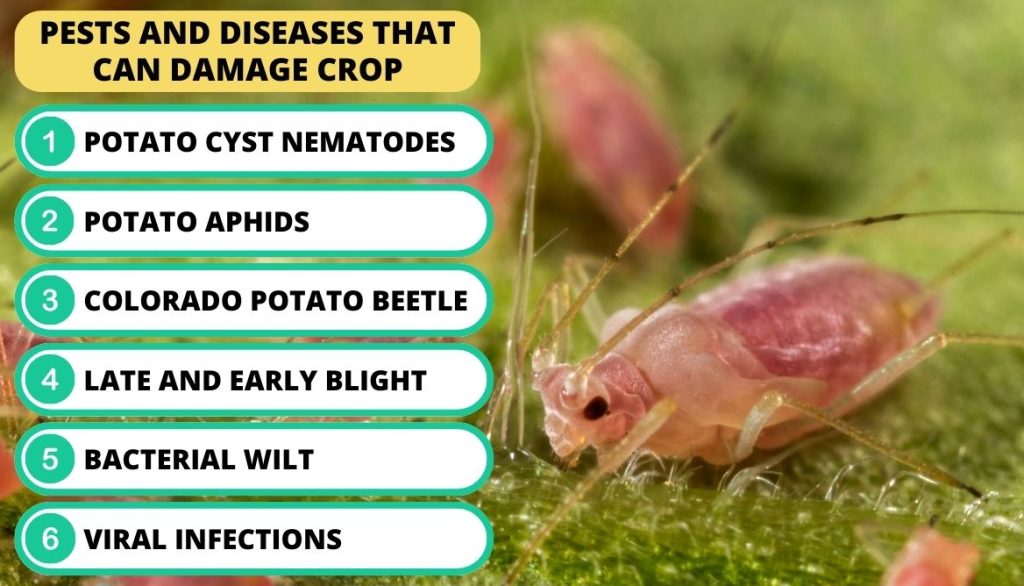
These can reduce plant vigor, hinder tuber bulking, and cause overall crop damage.
Late or improper application of pesticides, can leave the crop vulnerable to damage.
Things to Avoid for Proper Yield
Proper potato productivity can be influenced by several factors. Let’s discuss each of the items and explain why they should be avoided for optimal potato production;
1. Starting Too Late
It is essential to grow potatoes at the right time to ensure a successful yield.
- If you start planting too late in the season, the potatoes may not have sufficient time to grow and develop properly before the onset of unfavorable weather conditions such as frost or excessive heat.
- Late planting can lead to smaller tubers or even complete crop failure.
2. Letting Plants Dry Out
Potato seeds require consistent moisture throughout their growing season.
- If the plants are allowed to dry out excessively, it can result in stunted growth, decreased potato yield, and an increased risk of diseases.
- Adequate irrigation or rainfall should be provided to ensure that the soil remains consistently moist but not waterlogged.
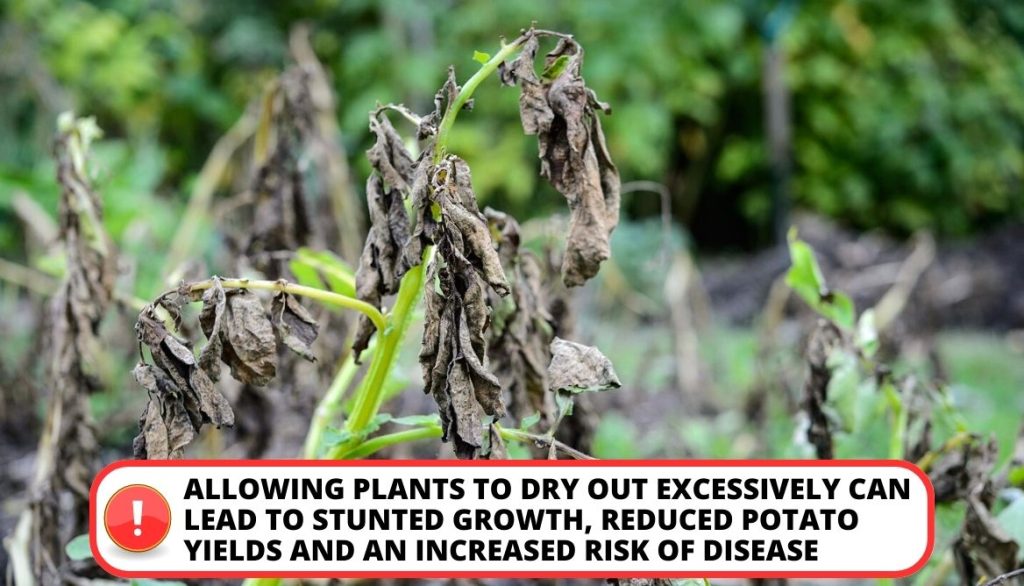
3. Using the Wrong Soil
Potato seeds prefer loose, well-drained soil with good fertility.
- Avoid using heavy clay or compacted soils, as they can hinder root development and drainage.
- Additionally, sandy soils that drain too quickly may not retain sufficient moisture for the seed potatoes.
- Optimal soil conditions provide the necessary nutrients, moisture, and aeration for the plants to thrive.
4. Not Enough Drainage
Poor drainage can have detrimental effects on potato growth.
- Excess water in the soil can lead to waterlogging, which deprives the plants of oxygen and promotes the growth of diseases. It can also cause the tubers to rot.
- Adequate drainage, either through natural slopes, raised beds, or proper soil amendments, helps prevent waterlogging and promotes healthy root growth.
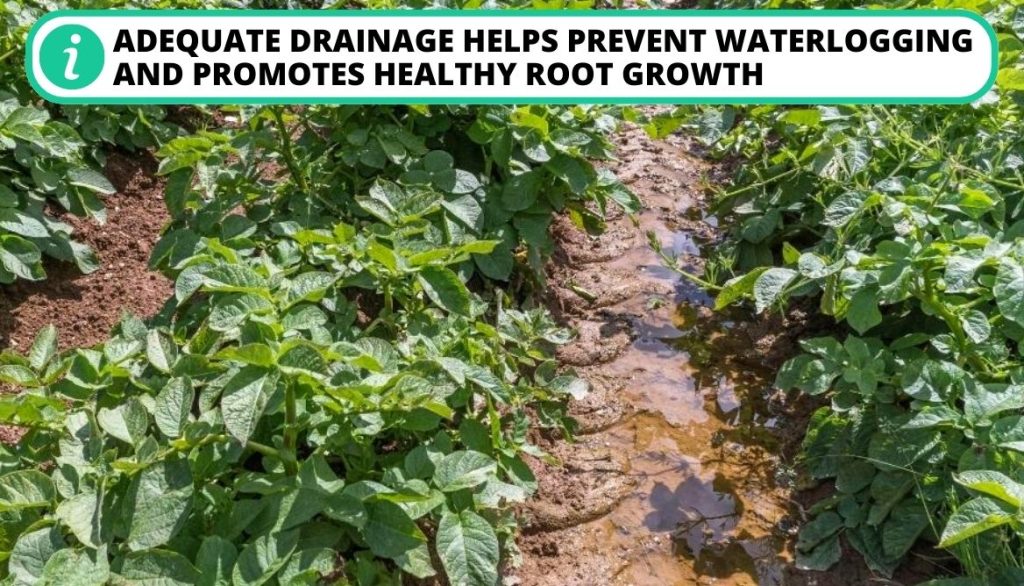
5. Too Many Seed Potatoes
It might seem logical to plant more seed potatoes to increase the yield. But, overcrowding can have a negative impact on how many potatoes per plant. When there are too many seed potatoes in a given area, they compete for resources such as:
- Water,
- Nutrients,
- Space.
This competition can result in small tubers and reduced overall yield. It is important to adhere to recommended spacing guidelines to provide each plant with enough room to grow and produce quality potatoes.
FAQ
How many potatoes do you get from 1 plant?
One potato plant can produce anywhere from 4 to 12 potatoes. However, it’s important to note that this is just an estimate, and the actual number can vary.
How many kg can a potato plant produce?
A potato plant can yield between 2 to 4 kg (4.4 to 8.8 lbs) of potatoes. But, some high-yielding varieties and optimal growing conditions can result in even higher yields.
What is the average yield of a potato plant?
In terms of weight, a single potato plant can produce anywhere from 2 to 5 pounds (0.9 to 2.3 kilograms) of potatoes per plant under optimal growing conditions.
Which potato has the highest yield?
One potato variety known for its high yield is the Russet Burbank. It is widely grown for commercial purposes and is particularly favored for processing french fries. Examples of other high-yielding potato varieties include Atlantic, Yukon Gold potatoes, Red Pontiac, and Maris Piper.
What is the maximum potato yield?
Under optimal conditions, modern farming practices can achieve yields of over 40 tons per hectare or 16 tons per acre in some cases. It’s important to note that these yields are achieved using advanced techniques and may not be typical for all regions or growers.
Conclusion
The number of potatoes per plant can vary depending on multiple factors, but on average, a potato plant can yield between 2 to 10 pounds of potatoes. However, with ideal conditions and suitable potato varieties, it is possible to achieve higher yields, ranging from 4 to 10 pounds per plant or more.
By understanding the crucial elements that affect potato production, such as potato varieties, growing conditions, planting density, fertilization, pest and disease management, harvest timing, and proper cultivation techniques, farmers and gardeners can maximize their yields.
Have you ever tried growing potatoes in your own garden, how many potatoes did you get from a plant? Leave your answer in the comment section. Thanks for reading.
- How to Get Potatoes to Sprout Eyes: Detailed Growing Guide with 3 Options - July 31, 2023
- Weight of a Medium Potato: Revealed in Detailed Guide - July 29, 2023
- Maris Piper Potatoes: 9 Substitutes You Should Know About - July 27, 2023
Hello! I’m Jessica Zander, a garden coach and consultant based in the Boston area (zone 6b), offering virtual consultations across the country and Canada.
I’ve been passionate about gardening since the early 1990s, and in 2022, I launched You Can Do It Gardening to empower individuals to feel more confident in their gardening endeavors.
Following a 30-year career in nonprofit finance and operations, I transitioned out of that field in mid-June of 2023 due to the growing demand for coaching services. Interestingly, my years of presenting financial statements to boards and finance committees proved to be valuable experience for teaching people about gardening! I enjoy sharing skills, providing guidance and suggestions, and collaborating efficiently with clients to make significant improvements to their outdoor spaces, both small and large. I also regularly teach at the Arlington Continuing Education and Cambridge Adult Education.
My approach is direct and practical, akin to Mary Poppins, but tailored to your garden. Clients find satisfaction in saving money and taking pride in their own gardening achievements.

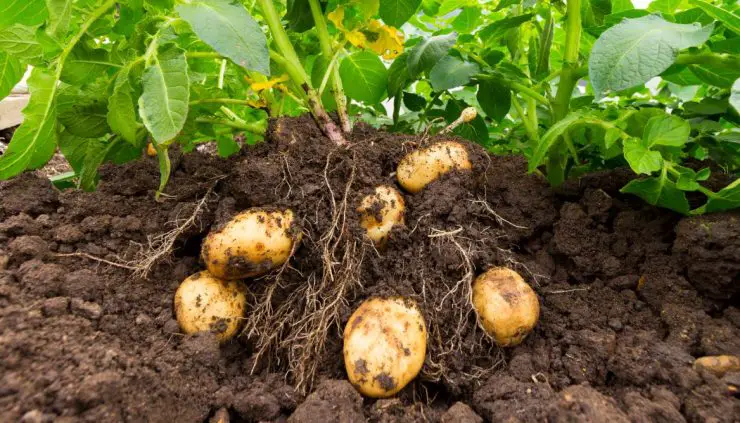
Add comment